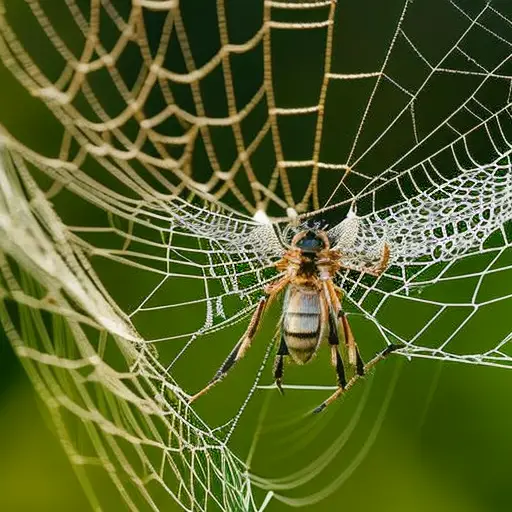The Importance of Respectful Wildlife Coexistence

In the intricate tapestry of our natural world, wildlife plays a vital role, symbolizing resilience, diversity, and interconnectedness.
However, the delicate balance between humans and wildlife is increasingly threatened by human activities.
This article delves into the importance of respectful wildlife coexistence, exploring the need for understanding, boundaries, and responsible tourism.
By embracing this ethos, we can safeguard the well-being of wildlife, preserve biodiversity, and foster a harmonious coexistence between humans and the magnificent creatures with whom we share this planet.
Understanding Wildlife Conservation
Understanding wildlife conservation involves studying the complex interactions between human activities and the natural habitats of various species. One crucial aspect of conservation is wildlife population management, which aims to maintain the balance between different species and their habitats. This involves monitoring population sizes, demographics, and distributions, as well as identifying and mitigating threats to their survival.
Sustainable hunting practices play a significant role in wildlife population management. When properly regulated, hunting can help control population sizes, prevent overgrazing, and reduce the risk of disease transmission among animals. By setting appropriate hunting seasons, bag limits, and quotas, authorities can ensure that hunting activities are sustainable and do not harm the long-term viability of species.
Additionally, sustainable hunting practices can contribute to local economies and provide incentives for communities to conserve wildlife and their habitats. By implementing regulations that promote ethical hunting practices, such as selective harvesting and fair chase, the negative impacts of hunting can be minimized, and the benefits maximized.
Understanding the intricacies of wildlife population management and sustainable hunting practices is crucial for effective conservation efforts. By incorporating scientific research, monitoring techniques, and community engagement, we can ensure the long-term survival of wildlife species while promoting responsible and respectful coexistence between humans and animals.
Impacts of Human Activity on Wildlife
Human activity has significant impacts on wildlife, particularly through habitat destruction. As human populations expand, natural habitats are being cleared for agriculture, urbanization, and infrastructure development, leading to the loss of critical ecosystems for numerous species.
This destruction not only disrupts the delicate balance of ecosystems, but it also increases human-wildlife conflicts as animals are forced to search for food and shelter in human-populated areas.
Additionally, certain human activities, such as poaching and pollution, contribute to species endangerment and further threaten wildlife populations.
Habitat Destruction Effects
The degradation of natural habitats caused by human activities poses significant threats to the survival and well-being of wildlife. Habitat destruction, resulting from practices such as deforestation, urbanization, and pollution, leads to the loss of critical ecosystems that support diverse species.
To mitigate the negative impacts, habitat preservation strategies have been implemented, emphasizing the importance of conserving and restoring habitats. Community-based conservation efforts have also emerged, involving local communities in the conservation and management of natural areas. These initiatives focus on empowering communities to take ownership of their natural resources and promoting sustainable practices that benefit both wildlife and human livelihoods.
By involving local stakeholders in conservation efforts, community-based conservation has shown promising results in protecting habitats and promoting coexistence between wildlife and human populations.
As we explore the solutions to human-wildlife conflicts, it is crucial to recognize the importance of preserving habitats and engaging communities in conservation efforts.
Human-Wildlife Conflict Solutions
Mitigating the impacts of human activity on wildlife requires implementing effective solutions to address the conflicts that arise from their coexistence. Conflict resolution plays a crucial role in finding a balance between human needs and the preservation of wildlife.
One solution is community engagement, which involves educating and involving local communities in wildlife conservation efforts. By raising awareness about the importance of wildlife and their habitats, communities can develop a sense of stewardship and actively participate in protecting wildlife. Additionally, community engagement can lead to the development of sustainable livelihoods that do not harm wildlife populations. Engaging local communities in decision-making processes and providing them with alternative sources of income can reduce the pressures on wildlife and minimize conflicts.
Transitioning into the subsequent section about ‘species endangerment causes’, it is important to understand the various factors that contribute to the endangerment of wildlife species.
Species Endangerment Causes?
One significant factor contributing to the endangerment of wildlife species is the impact of human activity on their habitats and ecosystems. Human activities such as deforestation, pollution, and overexploitation have led to a decline in the population of many wildlife species.
The following are three specific ways in which human activity affects wildlife:
-
Hunting regulations: Unregulated hunting can decimate animal populations and disrupt the delicate balance of ecosystems. Implementing and enforcing hunting regulations can help protect vulnerable species and maintain biodiversity.
-
Climate change effects: Human-induced climate change, primarily caused by the burning of fossil fuels, has a profound impact on wildlife habitats. Rising temperatures, changing precipitation patterns, and sea-level rise can lead to habitat loss, migration disruptions, and increased susceptibility to diseases and pests.
-
Loss of habitat: Human activities such as urbanization, agriculture, and infrastructure development result in the destruction and fragmentation of natural habitats. This loss of habitat deprives wildlife of their homes, food sources, and breeding grounds, pushing many species towards endangerment and extinction.
Addressing these impacts of human activity on wildlife requires a combination of conservation efforts, sustainable resource management, and policy interventions. It is essential for society to recognize the importance of respectful wildlife coexistence and take proactive measures to mitigate the negative effects of human activity on wildlife populations.
Benefits of Respectful Wildlife Coexistence
Respectful wildlife coexistence offers several benefits for both humans and wildlife.
Firstly, it promotes harmonious human-wildlife interaction, allowing for a greater understanding and appreciation of the natural world.
Secondly, it helps preserve ecological balance by ensuring that wildlife populations are not disrupted or endangered by human activities.
Lastly, respectful wildlife coexistence has a positive impact on biodiversity, as it allows various species to thrive in their natural habitats and contribute to the overall health and resilience of ecosystems.
Harmonious Human-Wildlife Interaction
Promoting a harmonious human-wildlife interaction enhances biodiversity conservation efforts and fosters sustainable ecosystems. By promoting education and community involvement, we can achieve this positive coexistence between humans and wildlife.
Here are three benefits of respectful wildlife coexistence:
-
Conservation: When humans and wildlife live in harmony, it helps protect and conserve biodiversity. By understanding the importance of wildlife in ecosystems, communities can actively participate in conservation efforts, such as habitat restoration and wildlife monitoring.
-
Economic opportunities: Respectful wildlife coexistence can also bring economic benefits to communities. Ecotourism, for example, provides opportunities for local businesses and livelihoods while promoting wildlife conservation. By valuing wildlife and their habitats, communities can generate sustainable income and improve their quality of life.
-
Enhanced well-being: Living in close proximity to wildlife can have positive impacts on human well-being. Interacting with nature and observing wildlife can reduce stress levels and improve mental and physical health. A harmonious human-wildlife interaction allows communities to appreciate the beauty of nature and develop a deeper connection with the environment.
Promoting a harmonious human-wildlife interaction is essential for preserving ecological balance and maintaining the health of our planet.
Ecological Balance Preservation
Achieving a harmonious human-wildlife interaction contributes to the preservation of ecological balance by fostering sustainable ecosystems and protecting biodiversity. Respectful wildlife coexistence plays a crucial role in ecological restoration and wildlife management efforts. By respecting and understanding the needs of wildlife, we can ensure the survival of different species and maintain a healthy balance in our ecosystems.
Ecological restoration involves the process of repairing and restoring damaged ecosystems, which can be achieved through respectful wildlife coexistence practices. This includes conserving habitats, promoting natural processes, and minimizing human disturbances. By doing so, we can help restore the natural balance and functioning of ecosystems, allowing them to provide essential services such as water purification, carbon sequestration, and nutrient cycling.
Wildlife management is another key aspect of preserving ecological balance. It involves monitoring and regulating wildlife populations to prevent overpopulation or extinction. Respectful wildlife coexistence practices, such as implementing sustainable hunting and fishing regulations, can help maintain healthy population levels and prevent negative impacts on other species and their habitats.
To illustrate the benefits of respectful wildlife coexistence, consider the following table:
| Benefits of Respectful Wildlife Coexistence |
|---|
| 1. Preservation of biodiversity |
| 2. Restoration of damaged ecosystems |
| 3. Maintenance of ecological balance |
Positive Impact on Biodiversity
By fostering respectful wildlife coexistence, we can significantly enhance biodiversity conservation efforts. Here are three ways in which respectful wildlife coexistence has a positive impact on biodiversity conservation:
-
Habitat preservation: When humans and wildlife coexist harmoniously, it reduces the need for habitat destruction. By respecting wildlife spaces and minimizing human encroachment, we can protect the natural habitats that countless species rely on for survival.
-
Species protection: Respectful wildlife coexistence promotes the conservation of endangered and vulnerable species. By minimizing disturbances and avoiding activities that harm wildlife, we can help ensure the survival of these species and their important roles within ecosystems.
-
Ecosystem resilience: When wildlife populations thrive, ecosystems become more resilient to disturbances. By maintaining a healthy balance between predators and prey, pollinators and plants, and all other elements of the ecosystem, we contribute to the overall health and stability of biodiversity.
These positive impacts highlight the importance of fostering respectful wildlife coexistence in our efforts to conserve biodiversity. Moving forward, it is crucial to establish boundaries for human-wildlife interaction to further promote this coexistence.
Establishing Boundaries for Human-Wildlife Interaction
With the aim of fostering a harmonious relationship between humans and wildlife, it is crucial to establish clear boundaries for their interaction. By defining these boundaries, we can promote understanding, minimize conflicts, and ensure the safety and well-being of both humans and wildlife.
One effective way to establish boundaries is through the implementation of wildlife management plans. These plans take into account the specific needs and behaviors of different wildlife species, as well as the human activities that may impact them. They provide guidelines and regulations for human-wildlife interactions, such as maintaining a safe distance, avoiding feeding or approaching wildlife, and respecting their natural habitats.
To emphasize the importance of establishing boundaries, let us consider the following scenario:
| Scenario | Human Action | Wildlife Response |
|---|---|---|
| Hiking in a national park | Staying on designated trails and observing wildlife from a safe distance | Wildlife continues their natural behavior and remains undisturbed |
| Approaching a wild animal | Getting too close or attempting to touch the animal | Wildlife may become stressed, feel threatened, or exhibit aggressive behavior |
As shown in the table, respecting boundaries ensures the well-being of both humans and wildlife. It allows wildlife to carry out their natural behaviors without disruption, while also ensuring the safety of humans who may unknowingly provoke negative reactions from wildlife.
Promoting Responsible Wildlife Tourism
To promote a responsible and sustainable approach to wildlife tourism, it is essential to prioritize the well-being and conservation of wildlife. Wildlife tourism can have both positive and negative impacts on the environment and the animals that inhabit it.
Here are three ways to promote responsible wildlife tourism:
-
Support wildlife conservation initiatives: When engaging in wildlife tourism, choose operators and organizations that actively support and contribute to wildlife conservation efforts. By doing so, you can ensure that your visit contributes to the protection and preservation of the natural habitats and the species that rely on them.
-
Practice ethical wildlife photography: Wildlife photography can be a powerful tool for raising awareness and appreciation for the beauty and diversity of wildlife. However, it is important to practice ethical wildlife photography, which means respecting the animals’ natural behaviors and habitats. Avoid disturbing or harassing the animals for the sake of capturing a photograph and use long lenses to maintain a safe distance.
-
Educate yourself and others: A responsible wildlife tourist should be knowledgeable about the local ecosystems, wildlife species, and conservation challenges in the area they are visiting. By educating yourself and others, you can make informed decisions and promote a greater understanding and appreciation for the importance of wildlife conservation.
Taking Action: Practical Tips for Coexisting With Wildlife
Practicing responsible behaviors is key to achieving a harmonious coexistence with wildlife. By being mindful of our actions and increasing our wildlife education, we can minimize negative interactions and promote the well-being of both humans and animals. Here are some practical tips for coexisting with wildlife:
-
Respect their space: Keep a safe distance from wildlife and avoid approaching or feeding them. This helps prevent stress and aggression.
-
Secure garbage bins: Properly store food and waste to discourage wildlife from scavenging in residential areas. This reduces the chance of conflicts and habituation to human food.
-
Protect your pets: Keep pets on a leash or in a secure area to prevent them from disturbing wildlife or becoming prey themselves.
-
Create wildlife-friendly surroundings: Plant native vegetation, provide water sources, and avoid the use of harmful pesticides to attract and support wildlife in your area.
-
Report concerns: If you encounter injured or aggressive wildlife, contact local wildlife authorities for assistance.
By implementing these responsible behaviors and educating ourselves about wildlife, we can foster a coexistence that benefits both humans and animals. Together, we can create a harmonious environment where wildlife thrives and our interactions are respectful and sustainable.
| Practical Tips for Coexisting With Wildlife |
|---|
| 1. Respect their space |
| 2. Secure garbage bins |
| 3. Protect your pets |
| 4. Create wildlife-friendly surroundings |
| 5. Report concerns |
Frequently Asked Questions
Are There Any Negative Consequences of Human-Wildlife Interaction?
Negative consequences of human-wildlife interaction include increased risk of disease transmission, habitat destruction, and disturbance to animal behavior. Mitigating impacts require implementing strategies such as education, conservation efforts, and responsible tourism to promote respectful coexistence between humans and wildlife.
How Can We Establish Boundaries for Human-Wildlife Interaction Without Harming the Animals?
Establishing ethical guidelines and implementing educational programs are key strategies for establishing boundaries in human-wildlife interaction without harming animals. These measures promote understanding, respect, and responsible behavior towards wildlife, ensuring coexistence for the benefit of both humans and animals.
What Are Some Practical Tips for Coexisting With Wildlife in Urban Areas?
Practical tips for coexisting with wildlife in urban areas include creating wildlife-friendly gardens with native plants, providing water sources, and reducing or eliminating pesticide use. Additionally, establishing wildlife corridors can help animals navigate urban landscapes safely.
What Measures Can Be Taken to Prevent Negative Impacts on Wildlife While Promoting Responsible Wildlife Tourism?
To prevent negative impacts on wildlife while promoting responsible wildlife tourism, measures such as proper waste management, habitat preservation, and education on wildlife behavior are crucial. Sustainable wildlife management practices should be implemented to ensure long-term coexistence.
How Can Individuals Contribute to Wildlife Conservation Efforts in Their Everyday Lives?
Individuals can contribute to wildlife conservation efforts in their everyday lives by promoting wildlife friendly landscaping, supporting local conservation organizations, and participating in citizen science projects. These actions help protect biodiversity and ensure the long-term coexistence of humans and wildlife.
Conclusion
In conclusion, the importance of respectful wildlife coexistence cannot be overstated. By understanding wildlife conservation, recognizing the impacts of human activity on wildlife, and establishing boundaries for human-wildlife interaction, we can promote responsible wildlife tourism and ensure the survival of various species.
Taking action and following practical tips for coexisting with wildlife are essential steps in ensuring a harmonious relationship between humans and the natural world.
Let us embrace this responsibility with a touch of satire, adding depth and complexity to our efforts.





